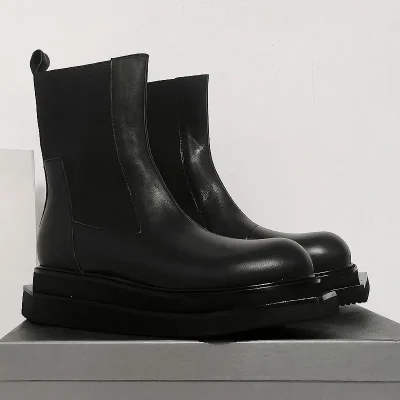Determining which boot soles last the longest can be challenging because durability depends on various factors such as material quality, usage patterns, terrain, maintenance, and individual wear. However, certain sole materials are known for their durability and are commonly used in high-quality boots. Here are some of the most durable boot sole materials:
1. Vibram Rubber Soles
- Pros: Vibram is renowned for producing durable rubber compounds designed to withstand rough terrain and heavy use.
- Features: High abrasion resistance, excellent traction, and long-lasting performance.
- Applications: Widely used in hiking boots, work boots, and mountaineering footwear where durability is paramount.
2. Danner Traction Tred Soles
- Pros: Danner’s Traction Tred soles are made from high-quality rubber with a unique lug pattern for exceptional traction and durability.
- Features: Excellent abrasion resistance, stability, and longevity, even in rugged conditions.
- Applications: Often found in Danner’s work boots and hiking boots designed for durability and performance.
3. Continental Rubber Soles
- Pros: Continental rubber compounds, commonly used in athletic and outdoor footwear, offer superior durability and traction.
- Features: Exceptional grip on wet and dry surfaces, excellent abrasion resistance, and long-term durability.
- Applications: Found in some hiking boots, trail running shoes, and approach shoes for reliable performance in demanding conditions.
4. Goodyear Welted Leather Soles
- Pros: Leather soles constructed using the Goodyear welt method are highly durable and can be resoled multiple times, extending the lifespan of the boots.
- Features: Classic aesthetic, excellent durability with proper care and maintenance, and the ability to customize with different sole materials.
- Applications: Commonly used in dress boots, work boots, and heritage footwear where longevity and quality craftsmanship are valued.
5. Thermoplastic Polyurethane (TPU) Soles
- Pros: TPU soles are known for their durability, flexibility, and resistance to abrasion, making them suitable for rugged outdoor use.
- Features: Lightweight yet durable, excellent traction, and good shock absorption properties.
- Applications: Used in hiking boots, trail shoes, and work boots for durability and performance in various environments.
6. Polyurethane (PU) Soles
- Pros: PU soles offer excellent durability and resistance to wear, making them suitable for long-term use in demanding conditions.
- Features: Lightweight, good shock absorption, and high abrasion resistance, ensuring longevity.
- Applications: Commonly found in hiking boots, work boots, and outdoor footwear where durability and comfort are essential.
Conclusion
While each of these boot sole materials is known for its durability, it’s essential to consider other factors such as fit, comfort, and intended use when selecting the right boots for your needs. Proper maintenance, such as cleaning and conditioning, can also significantly extend the lifespan of your boots regardless of the sole material. Ultimately, investing in high-quality boots with durable sole materials and taking care of them will ensure they last longer and provide reliable performance over time.


















